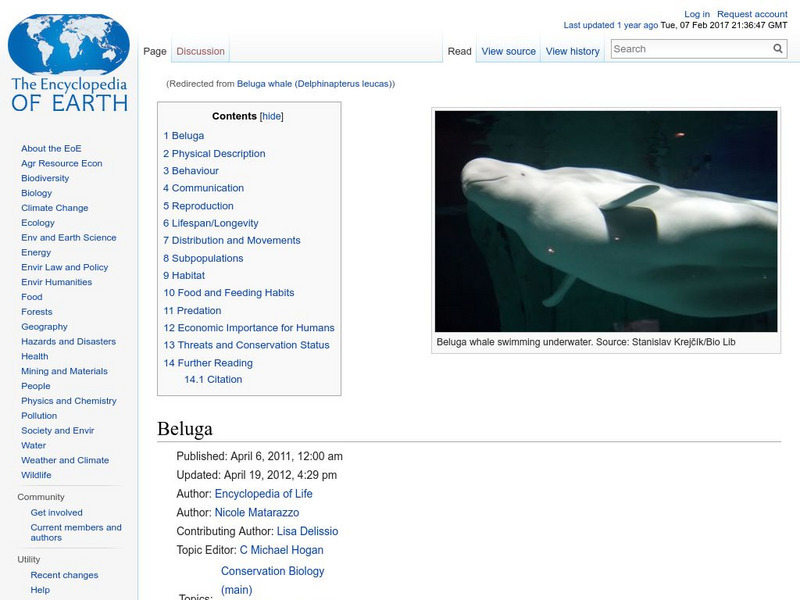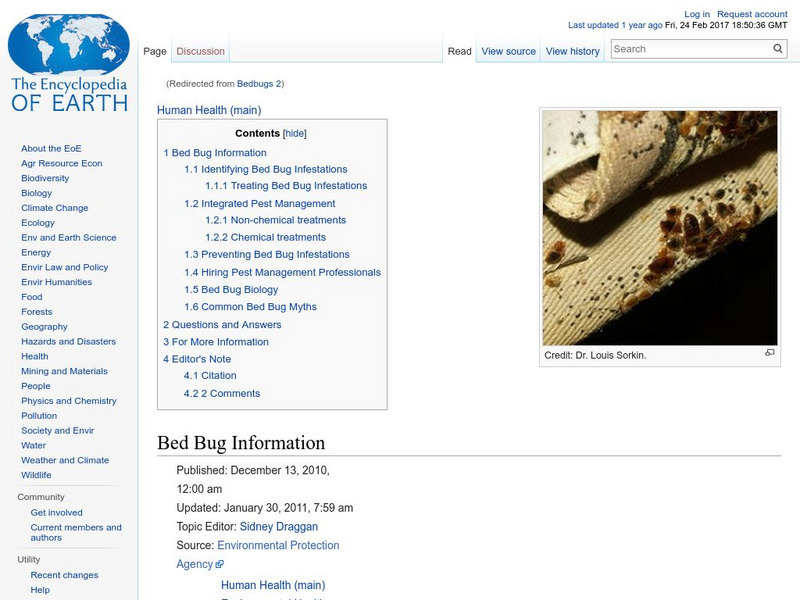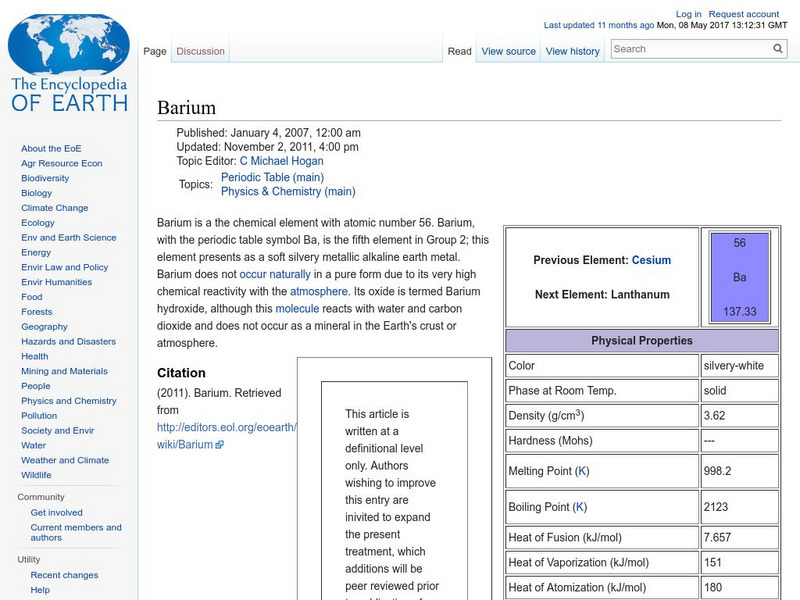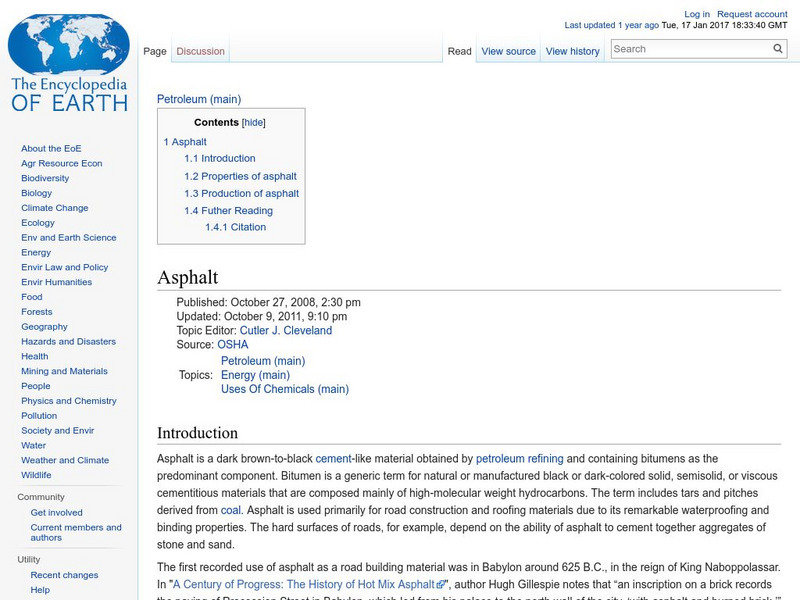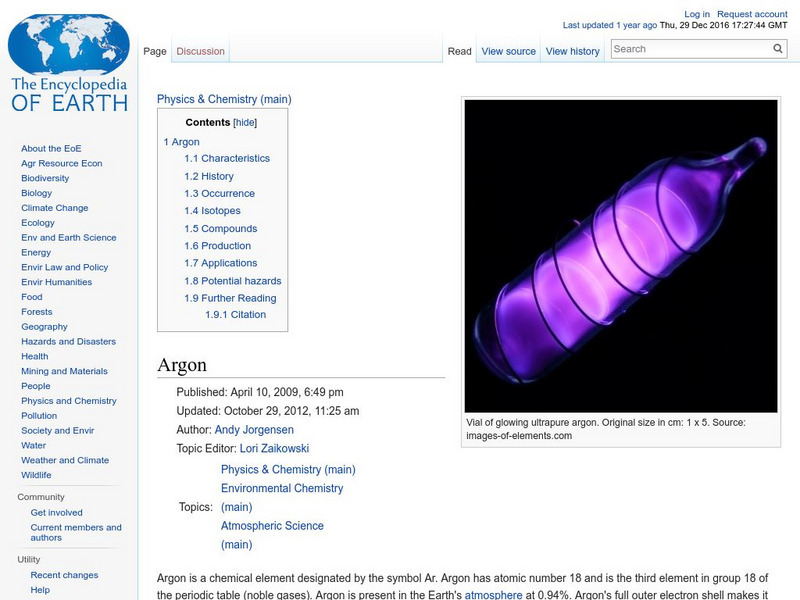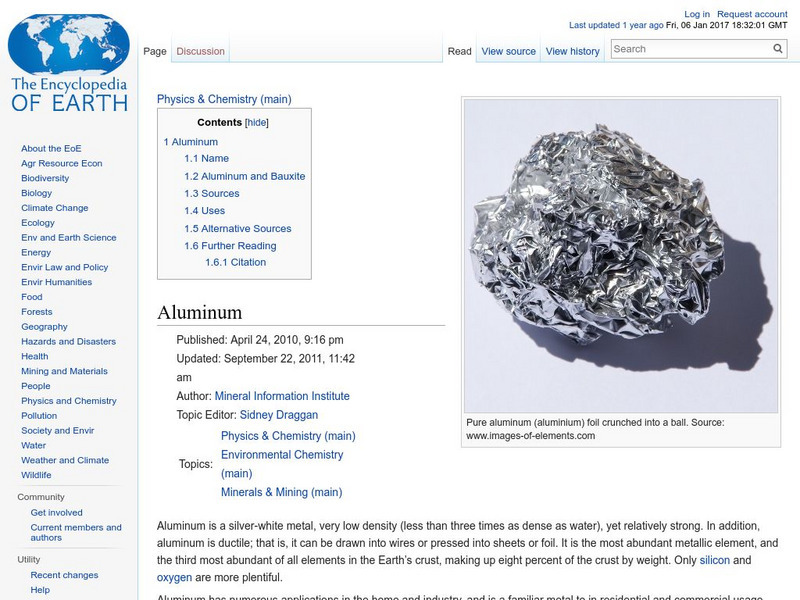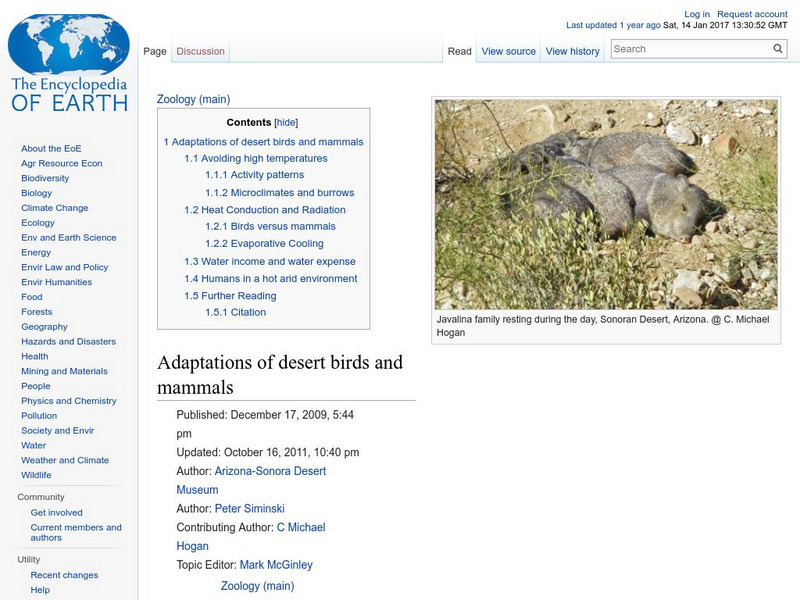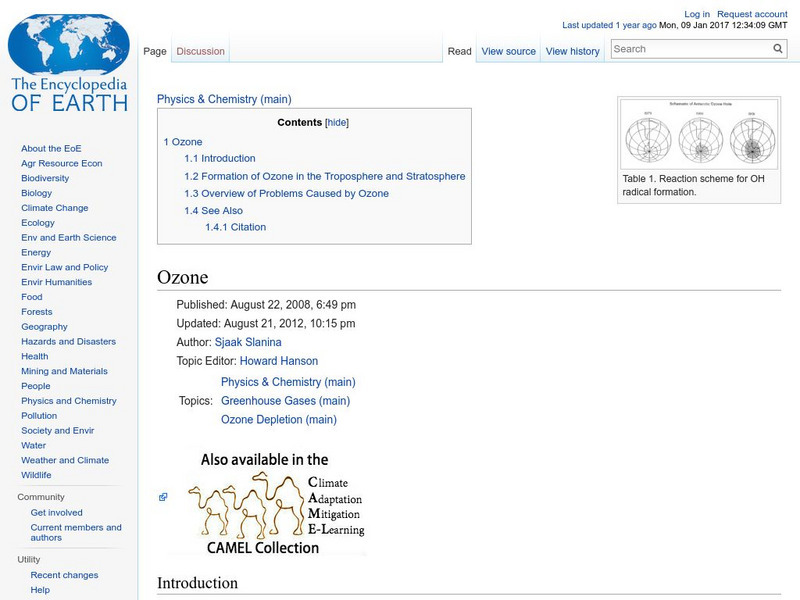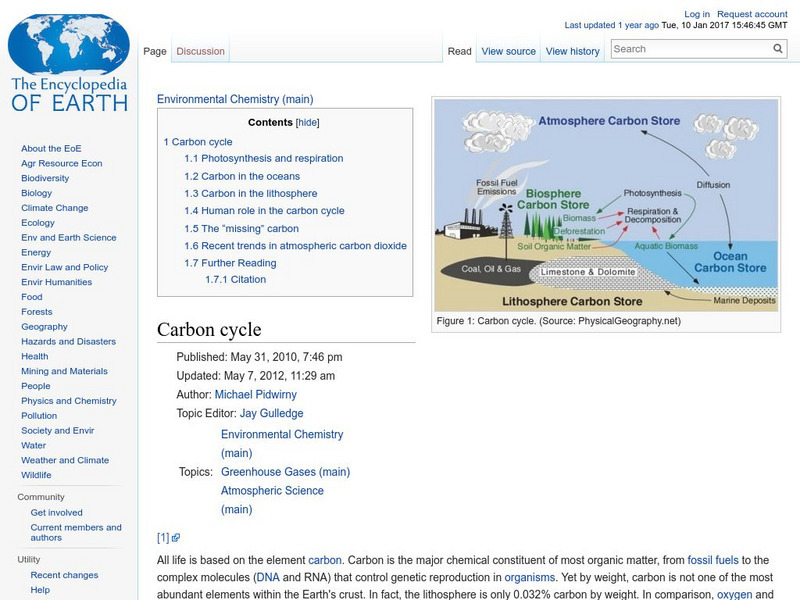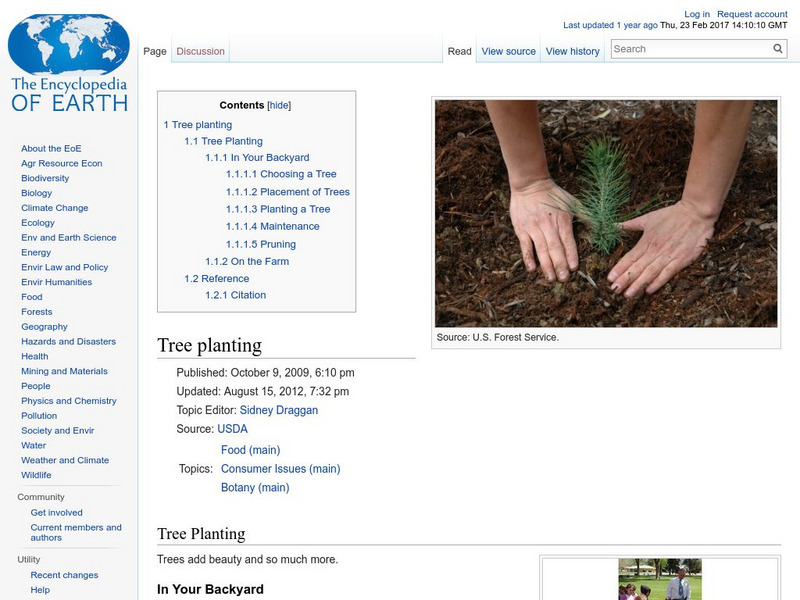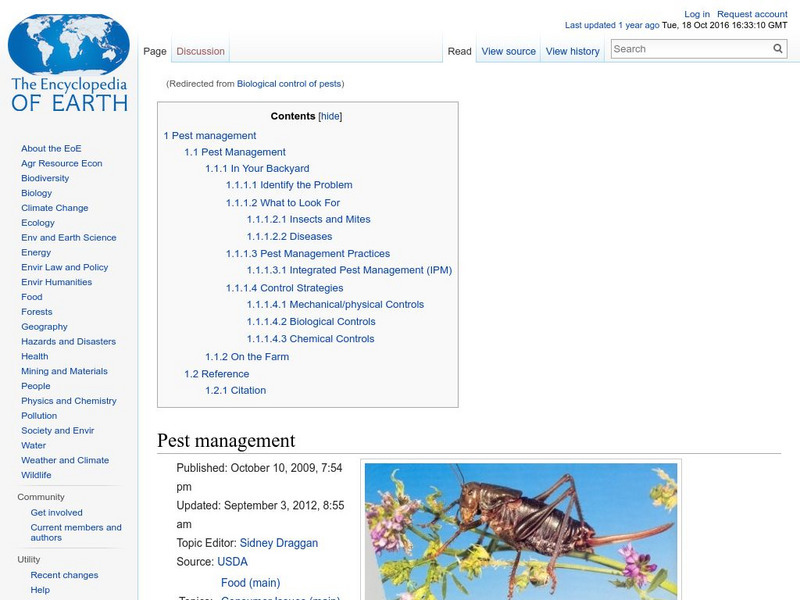Encyclopedia of Earth
Encyclopedia of Earth: Biology
A large collection of articles covering many topics and specialized fields in the discipline of biology.
Encyclopedia of Earth
Encyclopedia of Earth: Beryllium
Information about the element, Beryllium, atomic number 4. Covers physical and atomic properties, how abundant it is on the Earth, sources, uses, and permissible exposure limits.
Encyclopedia of Earth
Encyclopedia of Earth: Berkelium
Information about the element, Berkelium, atomic number 97. Covers physical properties, atomic properties, how abundant it is on the Earth, and details about health-related regulations.
Encyclopedia of Earth
Encyclopedia of Earth: Animal Behavior: Beluga
Detailed information about the physical characteristics, behavior, life cycle, distribution, habitat, etc. of the beluga whale.
Encyclopedia of Earth
Encyclopedia of Earth: Entomology: Bed Bug Information
Detailed information about bed bugs: how to identify them, treating and preventing infestations, physical features, life cycle, and misconceptions about bed bugs. Includes links to additional resources. (Published: December 13, 2010)
Encyclopedia of Earth
Encyclopedia of Earth: Barium
Basic information about the element, Barium, atomic number 56. Covers physical and atomic properties, how abundant it is on the Earth, and permissible exposure limits.
Encyclopedia of Earth
Encyclopedia of Earth: Petroleum: Asphalt
Explains what asphalt is, its properties, and how it is produced.
Encyclopedia of Earth
Encyclopedia of Earth: Arsenic
Basic information about the element Arsenic, atomic number 33. Covers physical properties and properties, sources, how abundant it is on the Earth, uses, and toxicity.
Encyclopedia of Earth
Encyclopedia of Earth: Argon
Information about the element, Argon, atomic number 18. Covers physical and atomic properties, how abundant it is on the Earth, its history, isotopes, uses, and health considerations.
Encyclopedia of Earth
Encyclopedia of Earth: Evolutionary Biology: Amphibian Ecology and Evolution
Information about amphibians, animals that can survive in a wide variety of habitats and cli-ates. The article discusses their behavior, diet, predators, conservation status, and evolution. (Published: August 29, 2008)
Encyclopedia of Earth
Encyclopedia of Earth: Evolutionary Biology: Amino Acid
A discussion of the structure and types of amino acids, and of how they combine to form proteins. (Published: October 16, 2010)
Encyclopedia of Earth
Encyclopedia of Earth: Americium
Information about the element, Americium, atomic number 95. Covers physical properties, atomic properties, how abundant it is on the Earth, and details about health-related regulations.
Encyclopedia of Earth
Encyclopedia of Earth: Aluminum
Information about the element, Aluminum, atomic number 13. Covers physical and atomic properties, how abundant it is on the Earth, and permissible exposure limits. Also discusses the origin of its name, sources of aluminum, and uses for...
Encyclopedia of Earth
Encyclopedia of Earth: Evolutionary Biology: Agassiz, Louis
Biography of Louis Agassiz, a natural historian and a contemporary of Charles Darwin. He was most famous for developing his theory of an Ice Age. Agassiz argued vehemently against the theory of evolution, based on his interpretations of...
Encyclopedia of Earth
Encyclopedia of Earth: Evolutionary Biology: Adaptations of Marsh Plants
Article describing the types of stressors faced by plants living in wetlands areas and adaptations they have made in order to survive. (Published: January 12, 2009)
Encyclopedia of Earth
Encyclopedia of Earth: Adaptations of Desert Plants
The ways in which plants have adapted through evolution in order to survive in a desert environment are described in this article. Getting water and retaining water are key to their survival, including protecting themselves from animals...
Encyclopedia of Earth
Encyclopedia of Earth: Adaptations of Desert Birds and Mammals
The ways in which animals have adapted so as to survive in a desert environment are described in this article. Mechanisms that humans have to help them cool themselves in a desert are also explained. (Published: December 17, 2009)
Encyclopedia of Earth
Encyclopedia of Earth: Adaptations of Desert Amphibians and Reptiles
The evolution of amphibians from prehistoric days is described, and the challenges they face when living in a desert environment, of which the ability to reproduce is the greatest. How they manage to survive in a desert is explained in...
Encyclopedia of Earth
Encyclopedia of Earth: Ecology: Abiotic Factor
Explains what an abiotic factor is, and discusses each of six types and their roles in ecosystems and habitats. (Published: July 31, 2010)
Encyclopedia of Earth
Encyclopedia of Earth: Mercury
Information about the element, Mercury, atomic number 80. Covers physical and atomic properties, where it is found, and health-related regulations. Also discusses its three main forms, uses for mercury, ways it spreads throughout the...
Encyclopedia of Earth
Encyclopedia of Earth: Physics & Chemistry: Ozone
Article explaining what ozone is, how it forms in the atmosphere, and the environmental problems it creates. (Published: August 22, 2008)
Encyclopedia of Earth
Encyclopedia of Earth: Environmental Chemistry: Carbon Cycle
Article explaining the importance of carbon as the basis for life, carbon dioxide's role in photosynthesis and respiration, carbon in the ocean and lithosphere, the impact of human activities on the carbon cycle, carbon that seems to be...
Encyclopedia of Earth
Encyclopedia of Earth: Botany: Tree Planting
Provides information about benefits of having trees in one's yard or on a farm, how to choose one, where to put it, how to plant it properly and safely, and how to care for it. (Published: October 9, 2009)
Encyclopedia of Earth
Encyclopedia of Earth: Entomology: Pest Management
Article discussing the types of pests that can affect garden plants (insects, mites, disease, weeds), how to determine the problem, ways of dealing with it, and prevention strategies. It also looks briefly at pest management on a farm....





